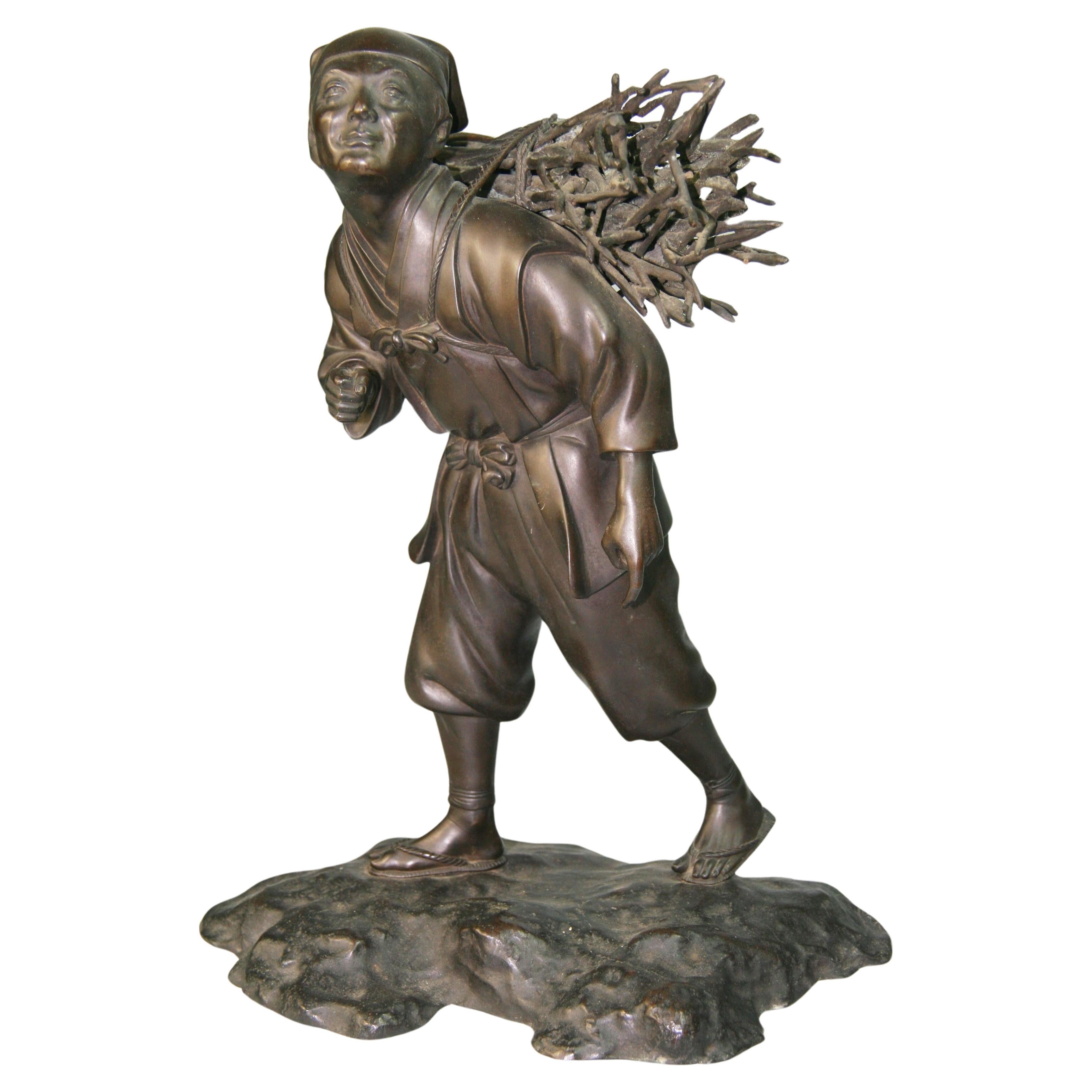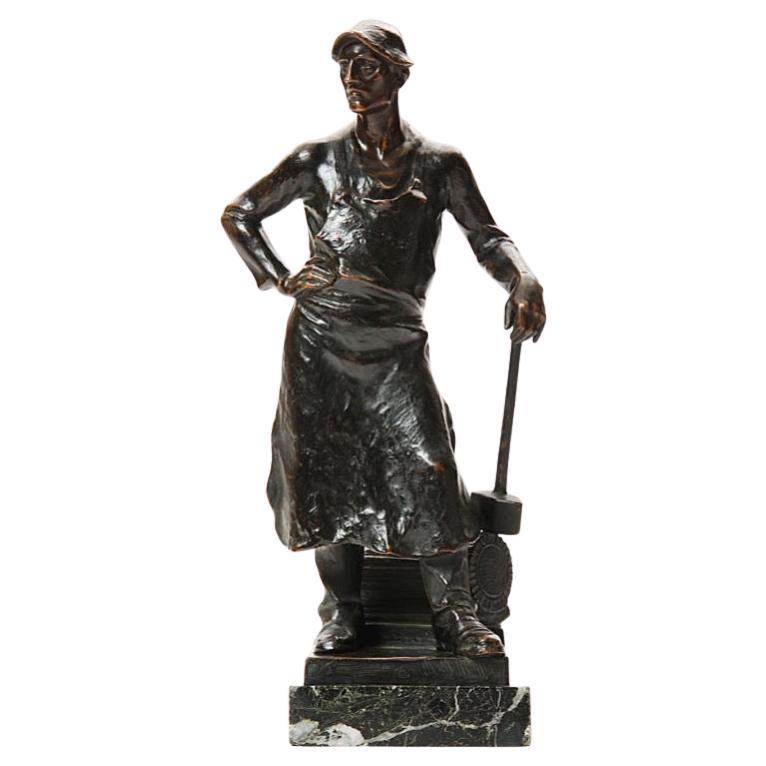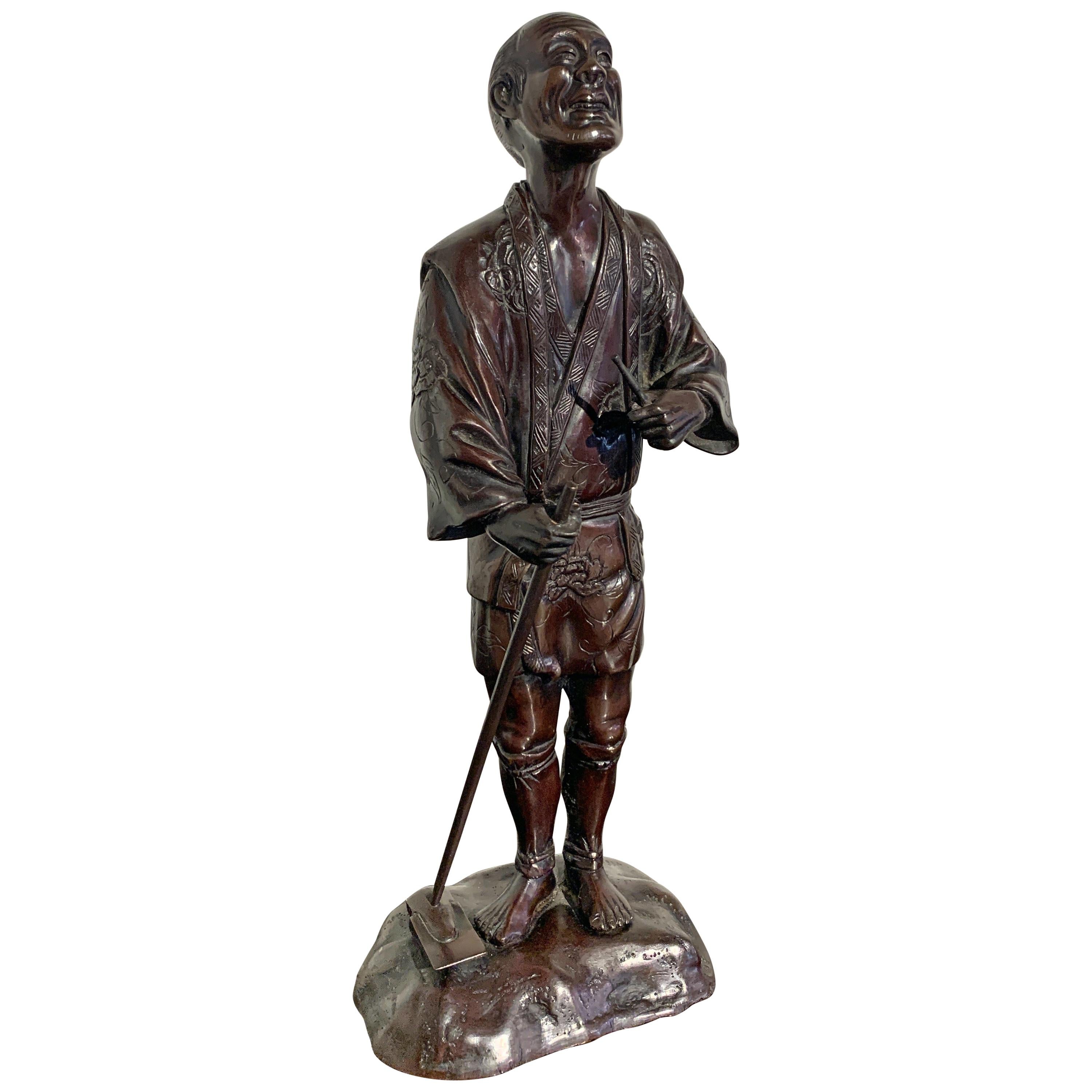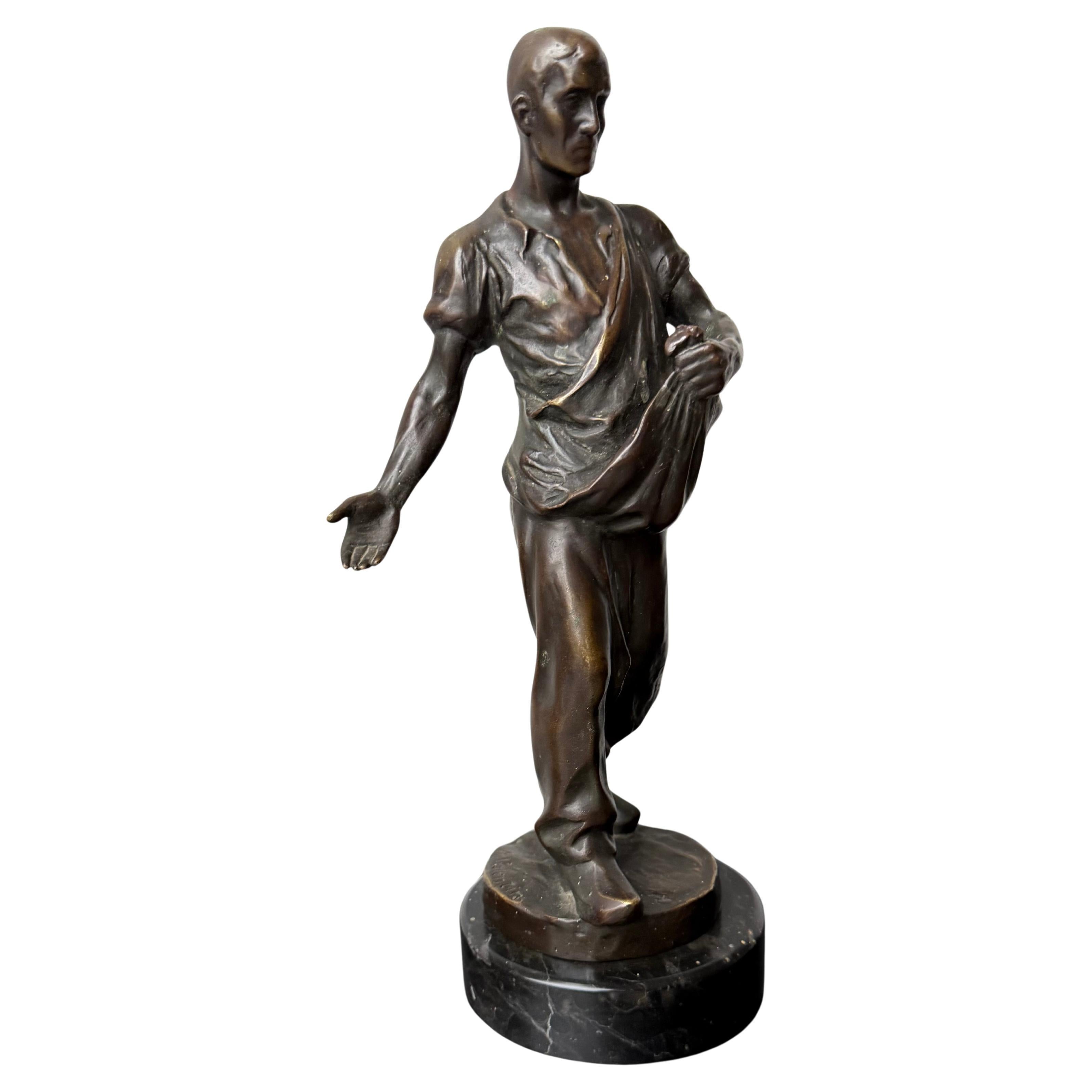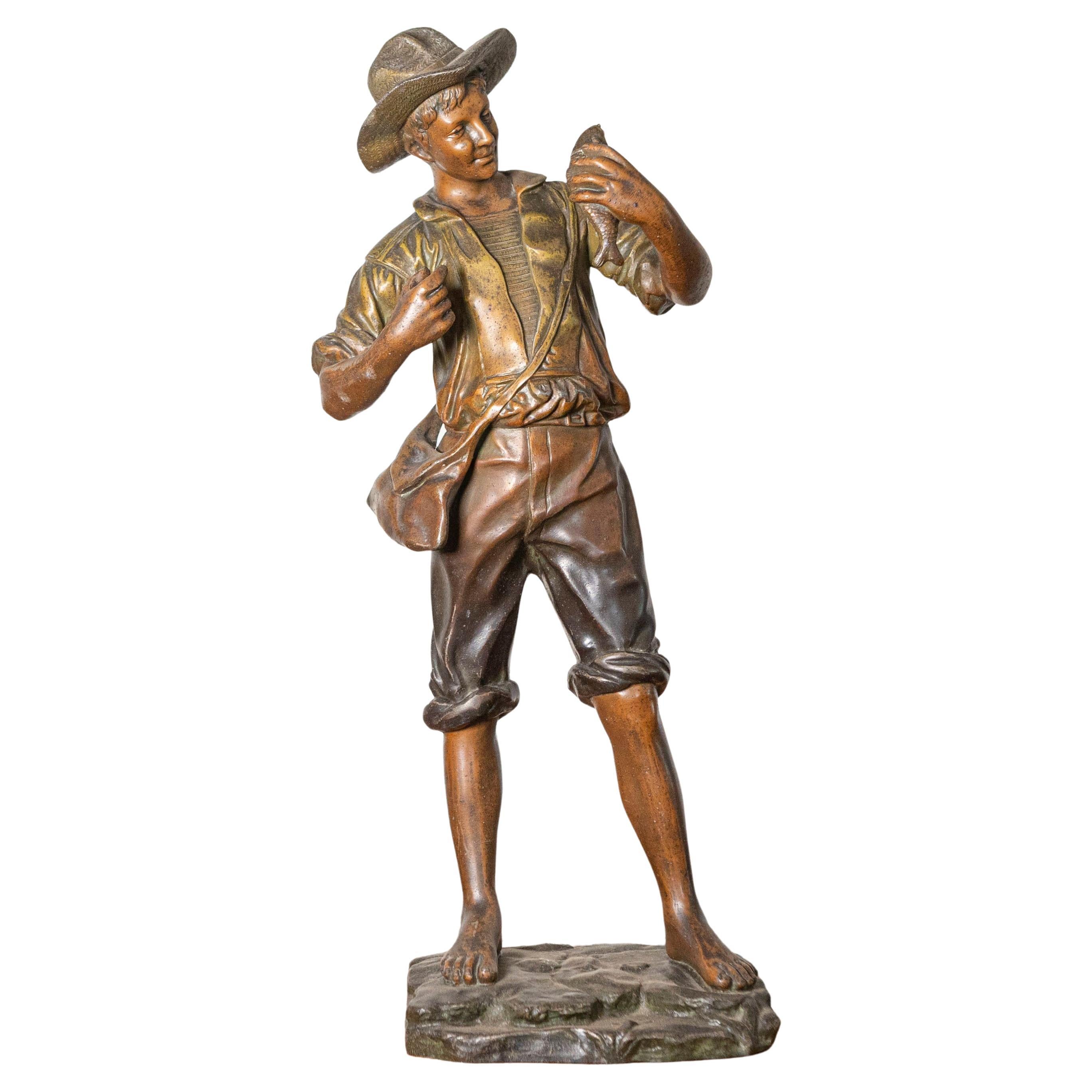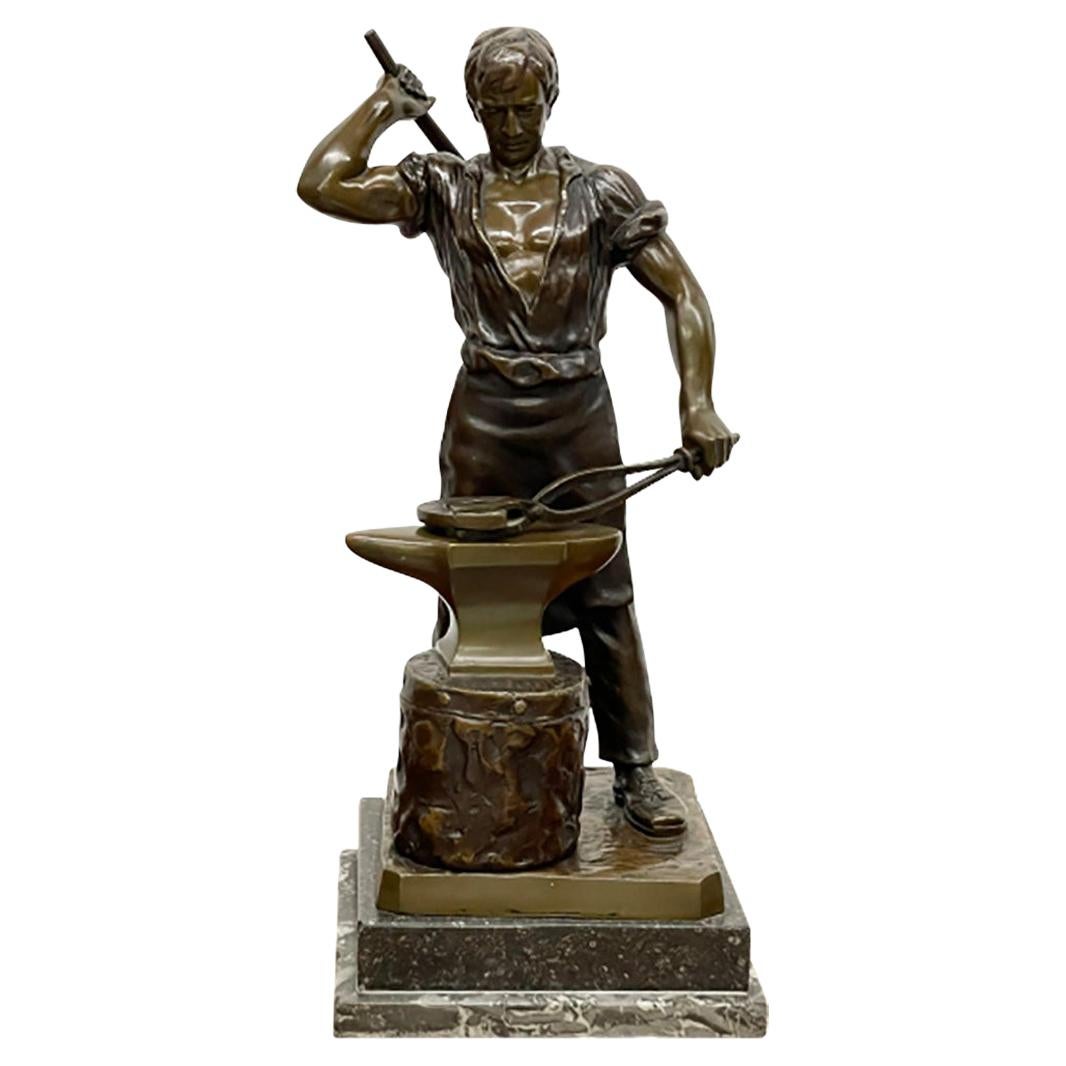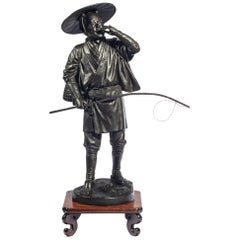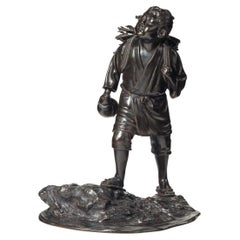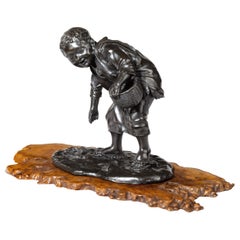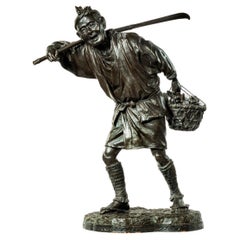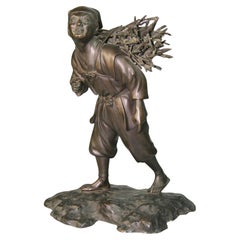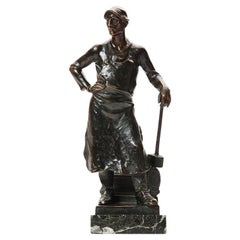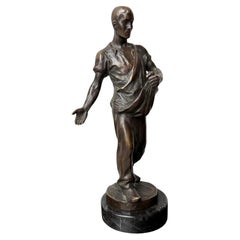Items Similar to Meiji Period Bronze Sculpture of a Labourer
Want more images or videos?
Request additional images or videos from the seller
1 of 5
Meiji Period Bronze Sculpture of a Labourer
$13,153.60
£9,600
€11,197.88
CA$18,017.14
A$20,039
CHF 10,463.74
MX$243,853.27
NOK 133,637.94
SEK 125,328.81
DKK 83,574.09
Shipping
Retrieving quote...The 1stDibs Promise:
Authenticity Guarantee,
Money-Back Guarantee,
24-Hour Cancellation
About the Item
Unusual Meiji period bronze of a labourer sieving through a woven reed mat with another at his feet and a wooden bucket at his side, signed.
About the Seller
5.0
Recognized Seller
These prestigious sellers are industry leaders and represent the highest echelon for item quality and design.
Established in 1982
1stDibs seller since 2013
132 sales on 1stDibs
Typical response time: 2 hours
Associations
LAPADA - The Association of Arts & Antiques Dealers
- ShippingRetrieving quote...Shipping from: Lymington, United Kingdom
- Return Policy
Authenticity Guarantee
In the unlikely event there’s an issue with an item’s authenticity, contact us within 1 year for a full refund. DetailsMoney-Back Guarantee
If your item is not as described, is damaged in transit, or does not arrive, contact us within 7 days for a full refund. Details24-Hour Cancellation
You have a 24-hour grace period in which to reconsider your purchase, with no questions asked.Vetted Professional Sellers
Our world-class sellers must adhere to strict standards for service and quality, maintaining the integrity of our listings.Price-Match Guarantee
If you find that a seller listed the same item for a lower price elsewhere, we’ll match it.Trusted Global Delivery
Our best-in-class carrier network provides specialized shipping options worldwide, including custom delivery.More From This Seller
View AllMeiji Period Bronze of a Cricket Catcher
Located in Lymington, Hampshire
A Meiji period bronze of a cricket catcher, shown holding a whistle to his mouth with his left hand and a long rod in his right hand, wearing traditional clothing with a wide-brimmed...
Category
Antique 19th Century Japanese Meiji Figurative Sculptures
Materials
Bronze
Meiji Period Bronze of a Boy Carrying Twigs
Located in Lymington, Hampshire
A Meiji period bronze of a boy carrying twigs, they are strapped onto his back on a carrying frame and he carries a gourd water bottle in his right hand, signed in a seal. Japanese, ...
Category
Antique Late 19th Century Japanese Meiji Figurative Sculptures
Materials
Bronze
19th Century Meiji Period Bronze of a Boy Collecting Sweet Chestnuts by Seiya
Located in Lymington, Hampshire
A charming Meiji period bronze of a boy collecting sweet chestnuts by Seiya, he carries a basket and is looking down at an insect crawling over his hand, he is also evidently wearing...
Category
Antique 1880s Japanese Meiji Figurative Sculptures
Materials
Bronze
A fine Meiji period bronze of a fruit picker by UDAGAWA
Located in Lymington, Hampshire
His bronze work is a collection in the Japanese Art Department of Ashmolean Museum, Oxford. This work, a farmer’s wife feeding a baby at lunch on a bench (bronze), is also reproduced in Professor HARADA Jiro’s article Studio: Japanese Art and Artists of Today V Metal work (page 102)
His original name was UDAGAWA Sutejiro 宇田川捨次郎, which he used on his work until Meiji 39. He exhibited at the Third (Meiji 23, 1890) and Fifth (Meiji 36, 1903) at the Inland Industrial Exhibition (Naikoku kangyo hakurankai) --- in both cases using his earlier name Udagawa Sutejiro. In Meiji 39 he adopted his new art name Udagawa Kazuo. He exhibited at major exhibitions abroad: P-142 (Paris Great Expo in 1900, section 1), Q-43, 88 (Paris Great Expo in 1900, section 2), R-531 (Paris Great Expo in 1900, award winning section), S-123 (St Louise...
Category
Antique Late 19th Century Japanese More Furniture and Collectibles
Materials
Bronze
Meiji Period Bronze of a Huntsman Carrying a Gun
Located in Lymington, Hampshire
A Meiji period bronze of a huntsman carrying a gun,
Signed in a seal. ??? in an elaborate seal script,
Which reads “Kakuha sei”. Japanese, circa 1910.
Kakuha Kanzaemon had shops...
Category
Vintage 1910s Japanese Figurative Sculptures
Materials
Bronze
Meiji Period Bronze Sculpture of a Mother and Son by Atsuyoshi
Located in Lymington, Hampshire
A Meiji period bronze sculpture of a mother and son by Atsuyoshi, she is shown seated on a gnarled rootwood base, with her arm round a crying boy standing by her knee and offering her breast, wearing a short robe, trousers and a cloth incised with Mount Fuji around her head, and bare feet. Signed Atsuyoshi saku, Maruki Shachu seisaku (??????????? (??????????). Japanese, circa 1880.
Footnote: Atsuyoshi is known for a number of finely modelled bronze studies of both wild and domesticated animals, almost all of them made for the Tokyo based Maruki Company. This is therefore an unusual subject matter for him and Japanese bronzes in general , however Oliver Impey and Joyce Seaman, in ‘Japanese Decorative Arts of the Meiji Period’ (in the Ashmolean Museum Collections), pp. 68-69, include a bronze group of a woman who has just finished breast feeding...
Category
Antique 1880s Japanese Meiji Metalwork
Materials
Bronze
You May Also Like
Antique Japanese Bronze Sculpture of a Peasant Worker 1920's
Located in Douglas Manor, NY
1351 Japanese bronze sculpture of a worker carrying wood.
Incredible detail.
Category
Vintage 1920s Sculptures and Carvings
Materials
Bronze
Sculpture of Standing Blacksmith by Adolf Joseph Phol
Located in Sagaponack, NY
A bronze statue of a blacksmith on a marble base.
Category
20th Century Austrian Sculptures and Carvings
Materials
Metal
Japanese Tokyo School Bronze Okimono of a Farmer, Meiji Period
Located in Austin, TX
A very fine and detailed Tokyo School cast bronze okimono (decorative sculpture) of a smiling farmer, Meiji period, late 19th century, Japan.
The e...
Category
Antique Late 19th Century Japanese Meiji Sculptures and Carvings
Materials
Bronze
Antique Top Quality Bronze Land Worker / Male Sower Sculpture by Max Valentin
By Max Valentin
Located in Lisse, NL
Antique museum quality bronze male sower on a marble base with signature, sculptor Max Valentin (1875-1931).
This antique is for the collectors and connoisseurs, because the quality...
Category
Early 20th Century European Arts and Crafts Mounted Objects
Materials
Marble, Bronze
19th Century French Bronze Sculpture
Located in Atlanta, GA
This exquisite 19th-century French bronze sculpture captures the essence of rural life through the figure of a young peasant boy. The boy is depicted with a charming, rustic appeal,...
Category
Antique 19th Century Italian Figurative Sculptures
Materials
Metal, Bronze
Bronze Statue of a Farrier
Located in Delft, NL
A bronze statue of a farrier.
A male figure in bronze on a black marble base.
The tools are separate parts.
The bronze is signed, not decipherable by whom.
The height of ...
Category
Antique 19th Century German Figurative Sculptures
Materials
Marble, Bronze
More Ways To Browse
Meiji Period
Japanese Meiji Carving
Reed Mats
Meiji Bronze Sculptures
Wooden Bucket
Bronze Bucket
Antique Wooden Buckets
Japanese Bucket
Antique Sieve
Ancient Chinese Furniture
Stone Carving Sculptures
Japan Wood Sculpture
Asian Heads
Japanese Head
Antique Lotus
Burmese Antiques
Figural Carving Furniture
Indonesian Art
